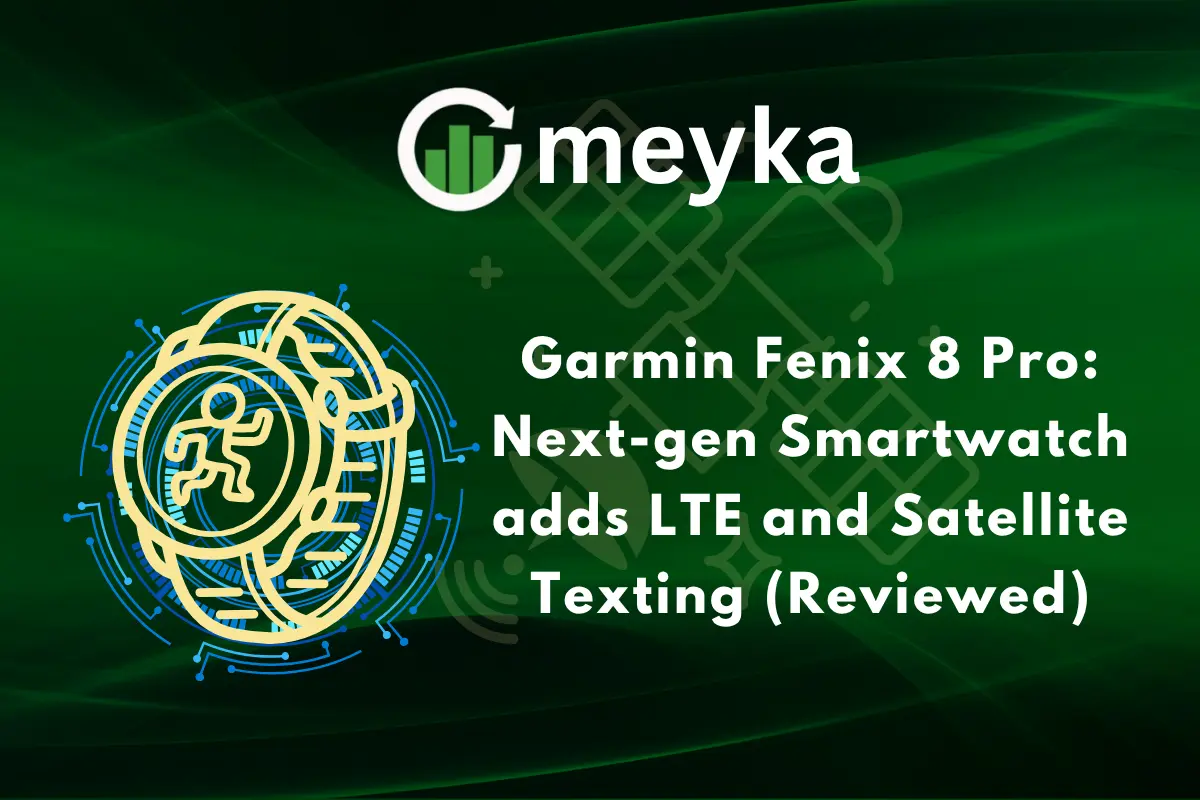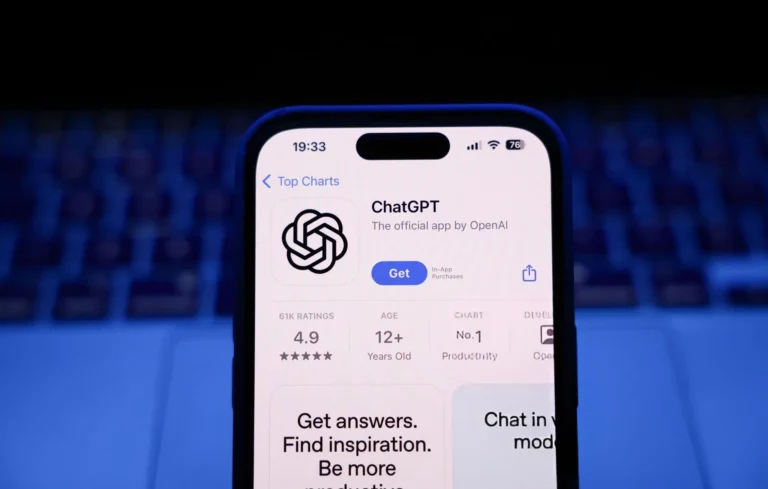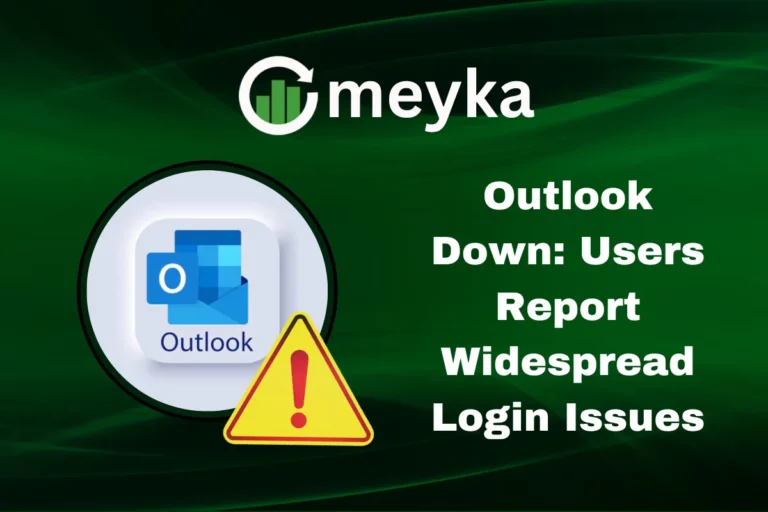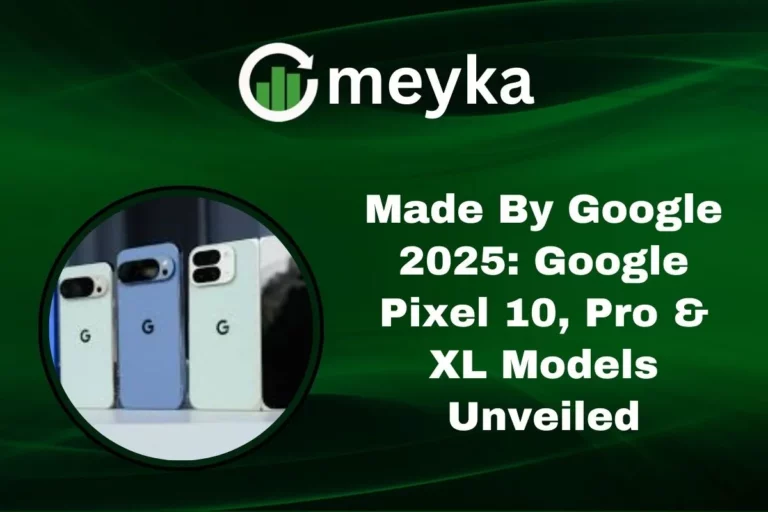Garmin Fenix 8 Pro: Next-gen Smartwatch adds LTE and Satellite Texting (Reviewed)
The Garmin Fenix 8 Pro, released in October 2025, has already made waves in the smartwatch world. Known for building tough and reliable wearables, Garmin has taken a big leap this time. The new model brings two major upgrades built into LTE and satellite texting. That means you can stay connected even when there’s no cell signal. Whether you’re hiking in the mountains or cycling through remote trails, this watch keeps you in touch.
The Fenix 8 Pro isn’t just about adventure, though. It’s smarter, faster, and more power-efficient than before. Garmin added a bright AMOLED display, longer battery life, and improved fitness tracking. Every feature feels designed for real users, not just tech fans.
In short, this watch bridges the gap between outdoor performance and everyday convenience. But with all these upgrades, one question remains: is it really worth the high price tag? Let’s break it down.
Garmin Fenix 8 Pro
Design and Build Quality
The Garmin Fenix 8 Pro builds on the rugged DNA of previous models and adds premium materials for a refined outdoor-ready feel. Announced on September 3, 2025, and launched on September 8, 2025, the watch comes in 47 mm and 51 mm sizes. The case uses titanium bezels with a fiber-reinforced polymer body and a sapphire crystal lens, delivering strong durability for outdoor use.
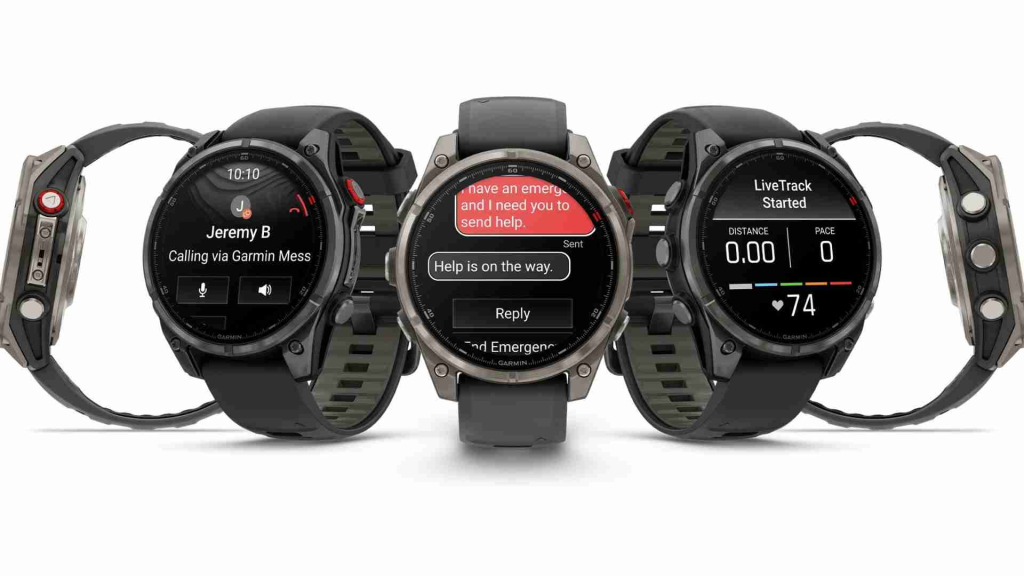
Compared to the standard Fenix 8, the Pro models are thicker to accommodate the built-in LTE and satellite antenna systems. For users who value a premium feel and toughness, the build impresses. The downside: the larger size may feel bulky on smaller wrists.
The display is a key upgrade. The 47 mm model features a bright AMOLED panel, while the 51 mm option offers an ultra-bright MicroLED variant. This means better sunlight visibility and richer visuals outdoors. The watch also carries rugged certifications (like MIL-STD-810) and water resistance up to 100 m with dive-profile support.
Display and User Interface
The Pro model’s AMOLED (and MicroLED) screen upgrades the viewing experience. The AMOLED version brings more vibrant colour and clarity versus older MIP displays. The MicroLED version, however, boasts brightness peaks of up to 4,500 nits (on the 51 mm version), pushing visibility to new levels for outdoor conditions. The user interface remains familiar for Garmin users, but now feels smoother, more responsive, and offers better map navigation thanks to the improved display.
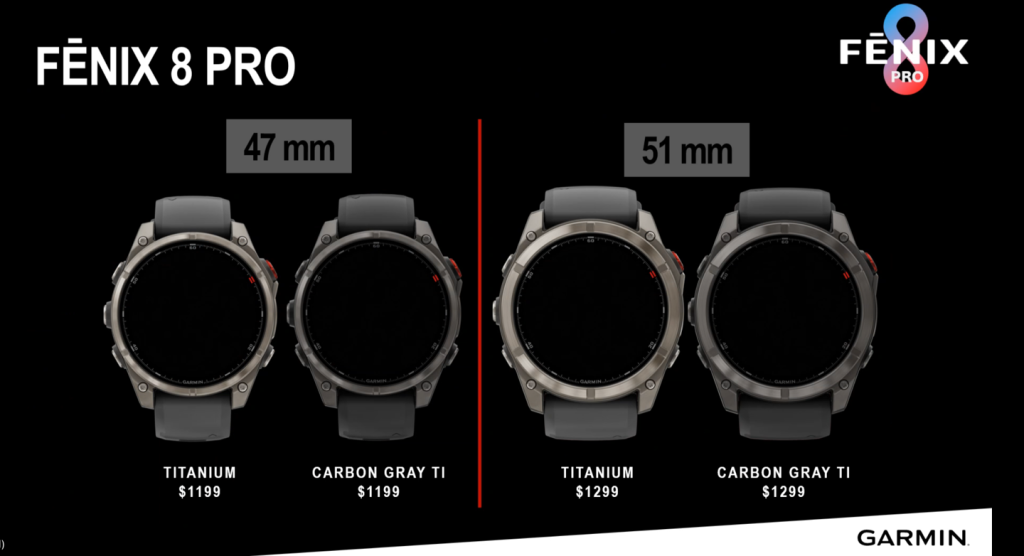
Touchscreen functionality plus physical buttons give flexible control in both active and harsh environments. The watch offers customisable widgets, quick access to health metrics, and an intuitive menu structure. For users who value clarity and quick readability outdoors, this display jump makes a noticeable difference.
LTE Connectivity: The Game Changer
Built-in LTE is one of the headline upgrades in the Fenix 8 Pro. Without needing your phone, you can make voice calls, send messages, share location (LiveTrack), and receive weather updates. The LTE is of the LTE-M (low power) kind, meaning it works in both US and Europe models without needing a separate carrier plan.
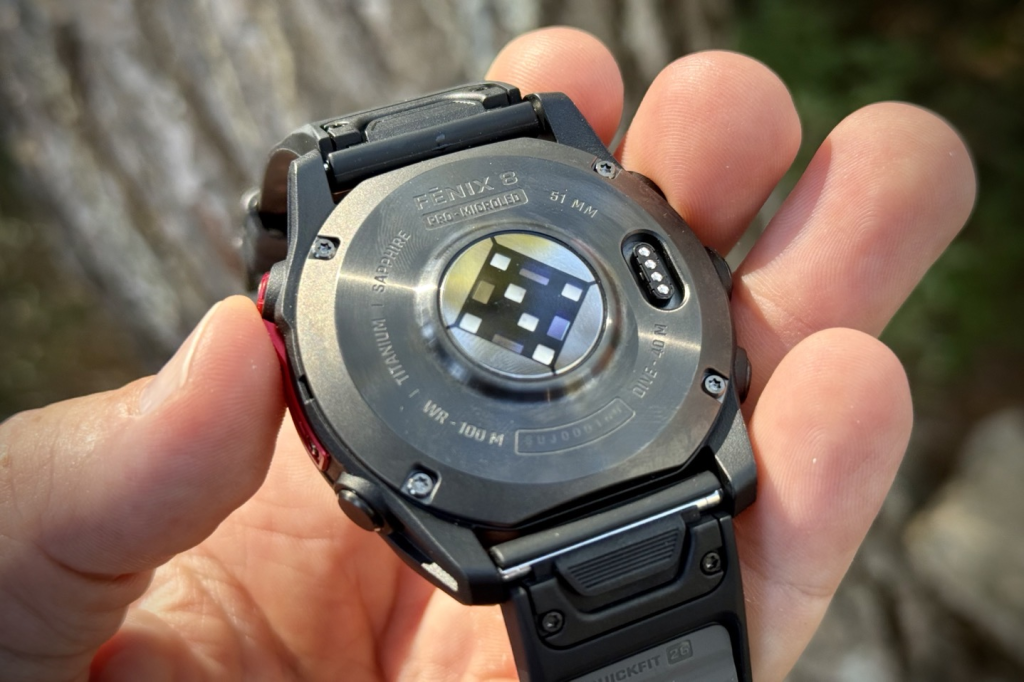
To use the LTE features, you must subscribe to Garmin’s inReach plan (starts around $8/month) and activate the service in the Garmin Connect / Messenger apps. The benefit: phone-free connectivity while training or adventuring. During a marathon test, LiveTrack alone drained about 9.43% of the battery per hour.
There are trade-offs: LTE reception still depends on network coverage and antenna placement. One reviewer found the connection to be inconsistent compared to competitors in certain urban zones. For anyone who values staying connected beyond basic smartwatch features, the LTE makes this model stand out.
Satellite Texting: Beyond Mobile Coverage
When LTE or phone signal fails, the Fenix 8 Pro switches into satellite mode. It uses the same infrastructure as Garmin’s inReach devices, enabling text messaging, location check-ins, and emergency SOS via satellite. Setting it up requires a clear view of the sky and proper wrist orientation to establish a satellite link (typically 10-30 seconds).
This feature is game-changing for remote adventurers who venture into areas with no cellular network. It might be the only way to stay in touch or call for help. However, note the limitations: satellite coverage isn’t truly global some far northern latitudes and remote regions are excluded. The functionality is primarily for short messages and SOS only; full phone functionality is not offered via satellite.
In short, this satellite capability elevates the watch from a standard outdoor tracker to a survival-grade device offering independence from a phone.
Performance and Features
The smartwatch carries forward the performance engine from the Fenix 8: multi-band GNSS (GPS, Galileo, GLONASS, Beidou, etc.), Elevate Gen 5 wrist heart rate sensor, onboard maps, dive tracking, and more. The training feature set is deep: metrics like Training Readiness, Hill Score, Endurance Score, Running Tolerance, real-time stamina, and more are all included. For serious outdoor users or athletes, this is a strong package.
Instruments like altimeter/barometer/compass (ABC sensors), ski/maps/golf features, and a speaker/microphone enhance versatility. The addition of LTE and satellite makes this the most connected Garmin watch yet. Some users may prefer the standard Fenix 8 if they don’t need LTE or satellite.
Battery Life and Charging
Battery life is strong, especially in smartwatch mode: on the 47 mm Pro AMOLED, reports say up to about 15 days in gesture-only mode (screen asleep until motion) and around 8-9 days in always-on mode. GPS mode and full satellite/LTE modes reduce runtime significantly: in LiveTrack with multi-band GNSS, the battery life fell to about 10 hours in one test. The MicroLED 51 mm variant sacrifices battery runtime for ultra-brightness: e.g., up to only ~10 days in smartwatch mode.
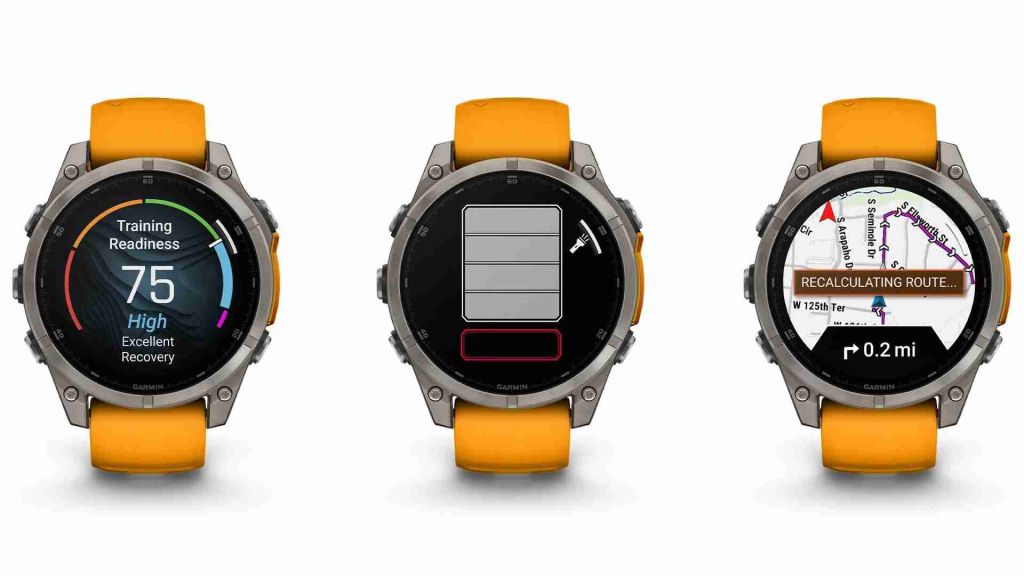
Charging is via USB-C and includes fast-charge support. Solar charging is not included in the Pro version (unlike some previous Garmin models), which did disappoint some long-haul users. Overall, the battery is competitive for premium wearables, but heavy usage of LTE/satellite will shorten runtime dramatically.
Safety and Navigation Tools
Safety features are robust. Incident detection, fall detection, and automatic alerts work when LTE is active. The Emergency SOS via satellite or LTE connects to Garmin’s 24/7 response service. Navigation is enhanced with full offline TopoActive maps, ski maps, golf course maps (over 4,200 worldwide), and dynamic routing. The inclusion of torch mode, built-in speaker, and microphone adds value when you’re on remote trails.
These tools deliver peace of mind when adventuring far from help. Still, one must remember that satellite features require manual engagement and clear skies; they are a backup, not a continuous network.
Price, Availability, and Variants
At launch, the Fenix 8 Pro lineup includes:
- 47 mm AMOLED model: starting at about US $1,199.
- 51 mm AMOLED model: slightly higher price (~US $1,299) for a larger case.
- 51 mm MicroLED model: premium edition around US $1,999.
Subscription to Garmin’s inReach service is required to unlock LTE and satellite features. Plans begin at around US $7.99/month with more expensive tiers for heavy satellite usage.
For those comparing to rivals (such as Apple or Samsung), the premium price reflects the niche of “true independent outdoor connected watch”. If you don’t need LTE/satellite, cheaper alternatives may be more sensible.
Pros and Cons
Pros:
- Built-in LTE and two-way satellite messaging deliver unmatched independence from a phone.
- Premium materials (titanium, sapphire) and rugged build suitable for serious outdoor use.
- Best-in-class tracking suite with advanced training metrics and full outdoor navigation.
- Brilliant display options, including MicroLED for ultra-bright visuals.
Cons:
- High cost and required monthly subscription for full functionality.
- Battery life is significantly impacted by LTE/satellite usage and by the MicroLED model.
- Larger case sizes may feel bulky for smaller wrists.
- Satellite coverage limitations and typing on a small screen remain inconvenient in remote mode.
Final Verdict
The Garmin Fenix 8 Pro marks a bold leap forward in outdoor smartwatches. By adding built-in LTE and two-way satellite messaging it gives users the freedom to leave their phone behind without feeling unconnected. For adventurers, athletes, and explorers who demand the best, the Fenix 8 Pro stands out as one of the most capable wearables on the market.
However, the high price and necessary subscriptions mean it’s best suited for users who will fully leverage its unique connectivity features. If you’re mostly day-to-day fitness and don’t venture far off-grid, you might be better off with a less expensive model. In any case, when independence from your phone matters most, this is a smartwatch built to go anywhere and keep you safe.
Frequently Asked Questions (FAQs)
Yes. The Garmin Fenix 8 Pro, released on September 8, 2025, includes built-in LTE support for calls, messages, and live tracking without needing a smartphone.
Yes. The Fenix 8 Pro can send and receive short satellite texts using Garmin’s inReach network. This feature works even when there is no mobile signal.
The Fenix 8 Pro battery lasts up to 15 days in smartwatch mode. With LTE or GPS active, it usually lasts around 10 to 12 hours.
Disclaimer: The above information is based on current market data, which is subject to change, and does not constitute financial advice. Always do your research.
